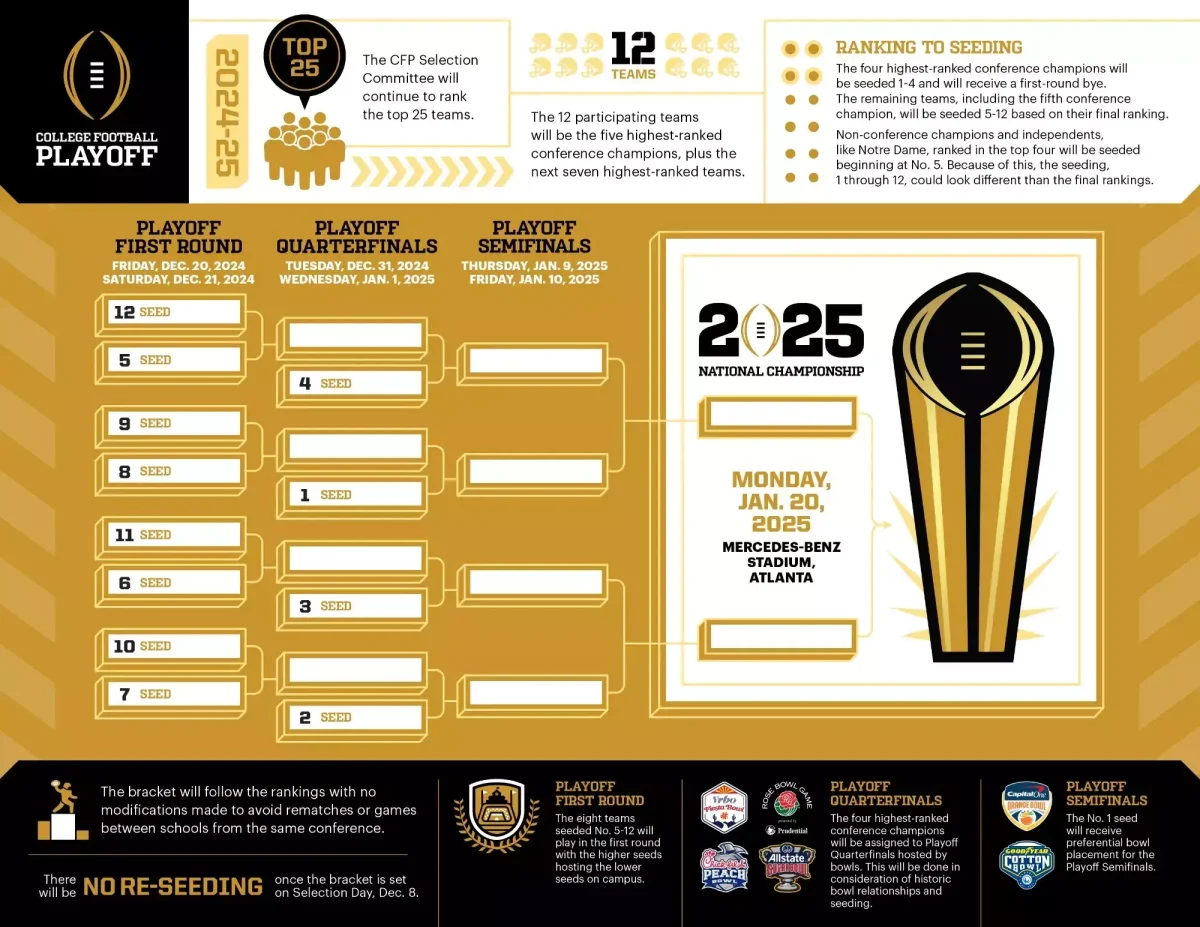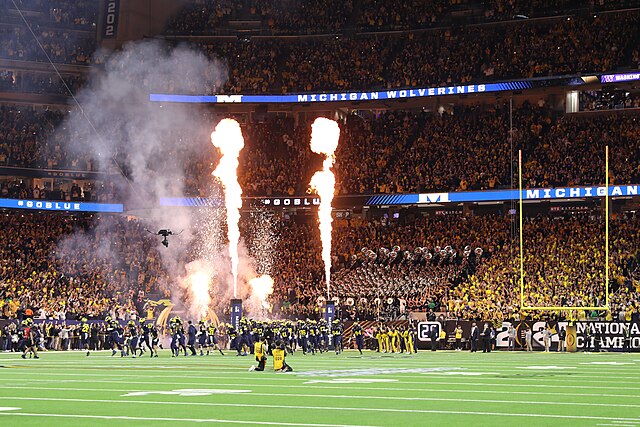The college football playoffs are an annual tournament at the end of the year for Division 1 FBS teams. In 2014, a new format was introduced, where the four most accomplished teams in the country competes for the national title. Many fans hated the idea at first, but eventually they started to come around to the notion of a college football national champion.
The four-team format lasted for ten years. But next January, the page will be turned once again, with 12 teams in contention for the title.
The format starts out with the top five seeds being the highest ranked conference champions. If the season ended today, those five conferences that would get the bid are SEC, Big Ten, Big 12, ACC and the MAC. Four of those five teams will get byes and go straight to the quarterfinals.
After the five conference champions have secured their spots, the college football committee is left to make the very hard decision to pick the seven teams that deserve an at-large spot in the playoffs. This year, it will be harder for the committee to make that decision. In the past it was pretty easy, as only four teams in the country were selected, and usually it was pretty clear which teams those were. Now, they have to pick three times the number of teams.
The College Football Playoff Selection Committee has a process when it comes to picking the teams. The first thing they look at is how the team performs on the field. They need to have a excellent record that reflects an elite strength of schedule. Also, the committee looks at head-to-head matches. Perhaps the most important factor that the committee considers is how top teams play against other highly ranked opponents.

Following the initial five team selections, the process for last seven teams works like this: each person on the committee creates a list of the best 30 that they believe could contend in the playoffs. Once they compare their top 30 teams, they determine if a team was listed three or more times, in which case they will remain under consideration. If not, the team is no longer in consideration. Each member of the committee will then make their case for each contending team until the group settles on which seven teams are most deserving of these spots.
After all 12 teams have been picked and ranked, the bracket play begins. The first round of games are the 12 seed versus the 5 seed, 9 versus 8, 11 versus 6, and 10 versus 7. If there is an upset and a higher seed wins, then they play the better ranked team in the semifinal round. For example, if the 11 wins over the 6 seed, they would play the 1 seed. This is so that the team that played best overall in the year gets the easier path to the championship.
As of right now, the 12-team playoff is under only a two-year agreement. Although the committee is expected to add an extra year for 2026-2027 season, nothing is confirmed yet. If they do not sign the extra year, then it will be back to the four-team playoff.
Once January 2025 comes around, the committee should have a much better sense for whether college football fans love or hate the expanded playoff system.



